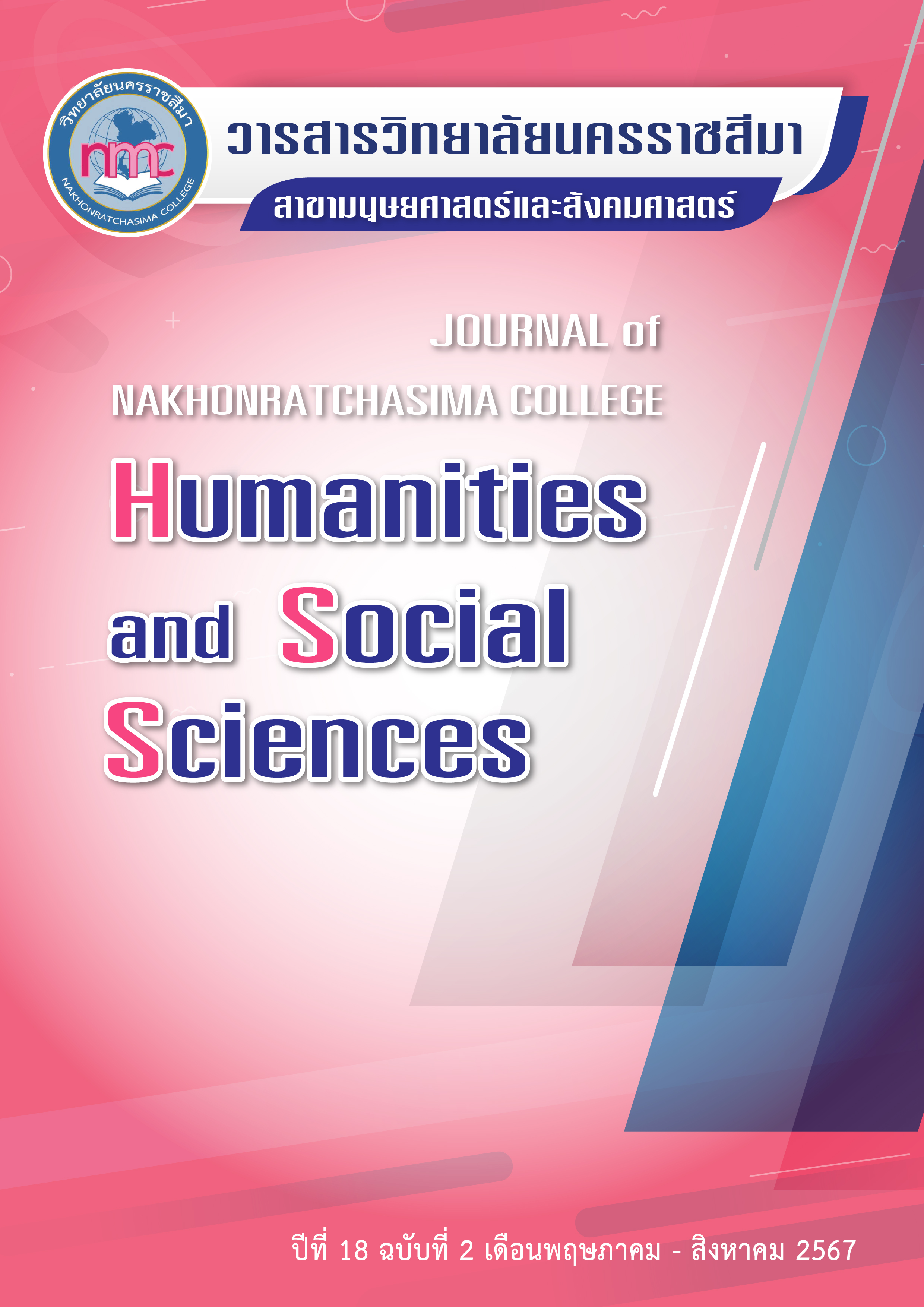The Singing Inheritance of Northern Shaanxi Folk Songs
คำสำคัญ:
Northern Shaanxi Folk Songs, Singing Inheritance, Inheritance modeบทคัดย่อ
This research adopts the mixed research method of qualitative and quantitative analysis, through questionnaire survey, expert interview, audio-visual archives survey statistics and related literature analysis, aimed to study (1) sort out the main singing inheritance mode of northern Shaanxi folk songs; (2) to explore the main factors affecting the singing inheritance of northern Shaanxi folk songs; and (3) the ways to enhance the influence of northern Shaanxi folk songs.
Through comprehensive research, this paper analyzes and summarizes the three main singing inheritance modes of northern Shaanxi folk songs at present, and combs out the singing inheritance pedigree of nearly five generations of northern Shaanxi folk songs. At the same time, it is found that under the continuous guidance of the policy, influential representative singing artists, classic works, innovative singing style, singing form and communication mode are the key elements to enhance the influence of northern Shaanxi folk songs. Through the statistical analysis of the questionnaire survey data, this paper finds the main factors that affect the inheritance of folk songs in northern Shaanxi and analyzes and describes the impact of these factors on the expansion of the inheritance path and the promotion of influence
เอกสารอ้างอิง
Bai, D. E .(2021). The style of singing is popular.Retrieved from https://baike.baiducom/item/%E6%B5%81%E8%A1%8C%E5%94%B1%E6%B3%95/79136
Ci, H. C. (1999). Ci Hai. Shanghai: Shanghai Dictionary Publishing House.
Compilation Office of the Great Chinese Dictionary. (2012). The Great Chinese Dictionary (popular version). Shanghai: Shanghai Dictionary Publishing House.
Cui, D. (2015). The exploration of using bel canto for reference in the singing of folk songs in northern Shaanxi. Industry and Technology Forum, (20), 199-200.
Dietrich, S. D. (1983).Sound Archives: A Guide to their Establishment and Development. IASA : Special Publication No. 4
Dong, H. (2009). Singing essentials and Analysis of Northern Shaanxi Folk songs. Chinese Music, (02),239-242.
Du, L. P. (2010). The reappearance and dissemination of the Beauty of National Culture-- on the re-creativity of C-E translation of folk songs in northern Shaanxi. Symphonic-Journal of Xi'an Conservatory of Music, (03), 58-61.
Fan, C. G. (2005).Protection and utilization of cultural heritage in Xinjiang. ( Doctoral thesis ).Central University for nationalities,Beijing.
Fang, X. S. (2010,02-03). "Telling the Story of Northern Shaanxi in European Musical Language" -- Sidelight of Northern Shaanxi Folk Song Concert in Vienna golden Hall. Guangming Daily, 02/03,1
Gao, J. (1998). Xintianyou in northern Shaanxi history. Journal of Yan'an University (Social Science Edition), (04) .48
Grosser, X. G., & W, C. F. (2012). The origin of art. Beijing: Beijing Publishing House .
He, H. S. (2018). Life is gorgeous because of dedication-- on the famous soprano singer Feng Jianxue. Horizon, (02), 44-47.
Jia, Z.W. (2016). A comparative study of "Elegant music" and "vulgar music" -- Qingyin Hui of Chengde and Folk songs of Northern Shaanxi. (Master's thesis). Hebei University. Baoding.7
Jie, B. (2009). The inheritance of folk songs from the perspective of cultural industry. Academic exchanges, (10), 185-188.
Lang, Y. L. (2020). The position and function of Chinese basic music education in the inheritance of traditional music culture. Chinese Journal of Education (S1), 120-121.
ดาวน์โหลด
เผยแพร่แล้ว
รูปแบบการอ้างอิง
ฉบับ
ประเภทบทความ
สัญญาอนุญาต
จรรยาบรรณผู้เขียนบทความ
ผู้เขียนบทความต้องรับรองว่าบทความนี้ไม่เคยตีพิมพ์ในวารสารใดหรือสิ่งพิมพ์อื่นๆ มาก่อน ต้องไม่คัดลอกผลงานผู้อื่นมาปรับแต่งเป็นบทความของตน และไม่ได้อยู่ระหว่างการเสนอเพื่อพิจารณาตีพิมพ์ อีกทั้งยอมรับหลักเกณฑ์การพิจารณาและการตรวจแก้ไขบทความต้นฉบับโดยกองบรรณาธิการวารสารวิทยาลัยนครราชสีมา สาขามนุษยศาสตร์และสังคมศาสตร์
บทความทุกเรื่องได้รับการตรวจพิจารณาทางวิชาการโดยผู้ทรงคุณวุฒิที่มีประสบการณ์และมีความเชี่ยวชาญตรงตามสาขาของบทความ ซึ่งผู้เขียนต้องแก้ไขตามคำแนะนำของผู้ทรงคุณวุฒิภายในระยะเวลาที่กำหนด หากไม่เป็นไปตามกำหนดกองบรรณาธิการขอสงวนสิทธิ์และยกเลิกการตีพิมพ์โดยจะแจ้งให้ทราบต่อไป
ข้อความที่ปรากฏในบทความของวารสารนี้เป็นความคิดเห็นของผู้เขียนซึ่งไม่เกี่ยวข้องกับวิทยาลัยนครราชสีมาแต่อย่างใด และกองบรรณาธิการขอสงวนสิทธิ์ในการพิจารณาและตรวจประเมินบทความเพื่อตีพิมพ์ในวารสารของวิทยาลัยนครราชสีมา สาขามนุษยศาสตร์และสังคมศาสตร์



